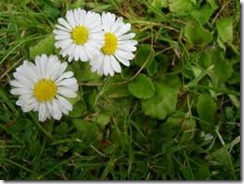Throughout time, the daisy plant’s bright colors and long stem have identified it as a symbol of summer. The fragrant smell of this plant is attractive to both people and insects. The daisy plant’s color, width and height vary in accordance to its type and habitat. The plant is found in America, Africa and Europe, and in many different environments.
History
-
The daisy plant is believed to have originated over 4,000 years ago. Many ancient Egyptian ceramics and artifacts discovered over the years are decorated with the daisy. These finding are the oldest dated proof of the daisy plant. The name "daisy" originated from the English name "day’s eye," which references how the daisy plant opens and closes with the sun. In primitive times, medicine men believed the plant cured eye trouble because of the daisy’s English name.
Types
-
Shasta daisy, White Button daisy, Zulu Prince Daisy–also known as the "Monarch of the Veldt"–African daisy and Gerber daisy are five types of daisies grown all over the world. The Shasta daisy blooms in early summer until fall. It is yellow in the center with white petals and green leaves. Most daisies require sun and must be watered if there is less than one inch of rain per week. The Zulu Princess daisy is the only daisy that is drought-resistant.
Geography
-
Dasiy flowers can be grown around the world, although the English daisy is native to north and central Europe. The daisy was first introduced to the United States in colonial times. In the U.S., they are primarily grown in the Southern states. The African daisy is native to South Africa, and in the U.S. this daisy grows in Southwestern regions. The Gerber daisy requires hot climates and is found in South Africa. The Zulu Prince daisy is also an African native. The Shasta daisy was first developed in California.
Botany
-
The daisy appears to be a flower, but it is actually from the Compositae family. This means that the daisy’s botany is composed of more than one part that collectively forms the daisy flower. In the middle of the daisy flower is the central disc; in the middle of the central disc are the disc florets, made of tiny little flowers. The ray florets, or rays, are the petals found around the central disc.
Warning
-
The long-term survival of the Maguire and Parish daisy plants are threatened by mining, trampling, energy exploration and numerous other human activates. The areas where these plants are grown have not been designated as Federal Wilderness Area under the Federal Wilderness Act. Without this distinction, these areas will continue to be legally used in ways that threaten the existence of the Maguire and Parish daisies. The United States Fish and Wildlife Services first classified the Maguire and Parish daisy plants as endangered in 1985. The status was changed from endangered to threatened in 1996 after the discovery of additional locations of Maguire and Parish daisy plants.


Deprecated: strpos(): Passing null to parameter #1 ($haystack) of type string is deprecated in /home/agriviek8Qv/agriviet.net/public_html/wp-includes/comment-template.php on line 2522